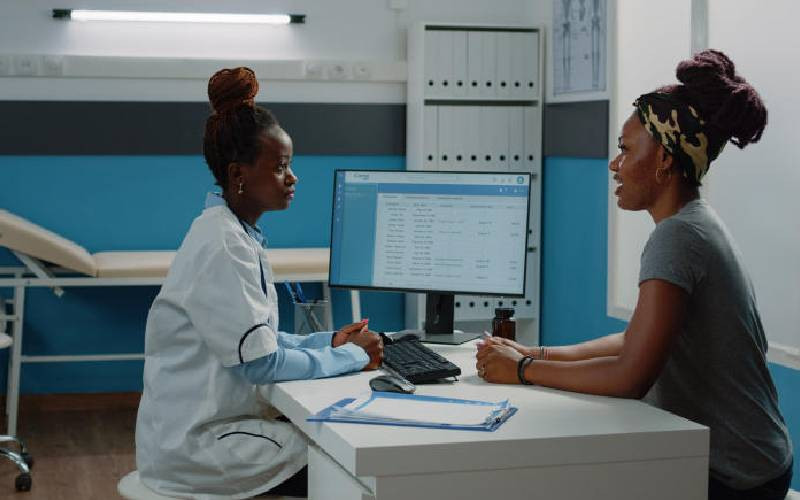By DR ALFRED MURAGE
Breast lumps are fairly common in women of reproductive age. The immediate worry is cancer if a breast lump is noted. But luckily, more than 90 per cent of breast lumps in women between the ages of 20 and 50 years are not cancerous (referred to as benign). However, any breast lump warrants further medical evaluation.
Breasts have variable consistency, which varies with the menstrual cycle. And with advancing age, breasts become less dense and more fatty. Women are encouraged to get used to how their breasts look and feel. This makes it easy to notice any unusual change. You will easily differentiate tenderness and lumpiness that varies with the menstrual cycle from other changes that may be abnormal.
unusual discharge
You need to consult a doctor when you notice new or unusual lumpiness that does not change with the menstrual cycle. Skin changes on the breast that warrant consultation include redness, itchiness and dimpling. And if the nipple has an unusual discharge, turns inwards or becomes flatter, a consultation is also indicated.
Your doctor will ask questions that may give clues to guide further evaluation. In particular your risk of breast cancer will be quantified based on family history and other factors. A clinical breast examination is then carried out, aimed at confirming the presence of the lump, its size, location and tenderness. Deeper breast tissues are also examined, including checking your armpits for swollen nodes or areas of thickening. Examination of the other breast is also done at the same time.
If a lump is confirmed, further testing is necessary to make a definite diagnosis and decide if any treatment is required. You may be asked to have a diagnostic mammogram or a breast ultrasound scan. This may be all that is necessary for majority of women. However, more precise imaging with MRI may be required, especially if initial imaging with other modalities is inconclusive. Even though breast cancer has specific features on imaging, a biopsy is often required to make a diagnosis.
treatment
This can often be done in the clinic using imaging guidance, and is known as fine needle aspiration biopsy. A pathologist usually analyses the biopsy and gives a final report confirming or refuting the presence of cancer cells.
Following medical evaluation, the majority of women will not have breast cancer. All they need is reassurance, and further review should any symptoms recur. Should cancer be diagnosed, referral to a specialist centre must done immediately.
Breast cancer treatment centres have teams of specialists and the resources required to provide optimal treatment, ensuring the highest chances of cure. After completing treatment, ongoing follow up is required to detect any recurrence. And in rare cases, early screening of family members may be advised.
 The Standard Group Plc is a
multi-media organization with investments in media platforms spanning newspaper
print operations, television, radio broadcasting, digital and online services. The
Standard Group is recognized as a leading multi-media house in Kenya with a key
influence in matters of national and international interest.
The Standard Group Plc is a
multi-media organization with investments in media platforms spanning newspaper
print operations, television, radio broadcasting, digital and online services. The
Standard Group is recognized as a leading multi-media house in Kenya with a key
influence in matters of national and international interest.
 The Standard Group Plc is a
multi-media organization with investments in media platforms spanning newspaper
print operations, television, radio broadcasting, digital and online services. The
Standard Group is recognized as a leading multi-media house in Kenya with a key
influence in matters of national and international interest.
The Standard Group Plc is a
multi-media organization with investments in media platforms spanning newspaper
print operations, television, radio broadcasting, digital and online services. The
Standard Group is recognized as a leading multi-media house in Kenya with a key
influence in matters of national and international interest.








